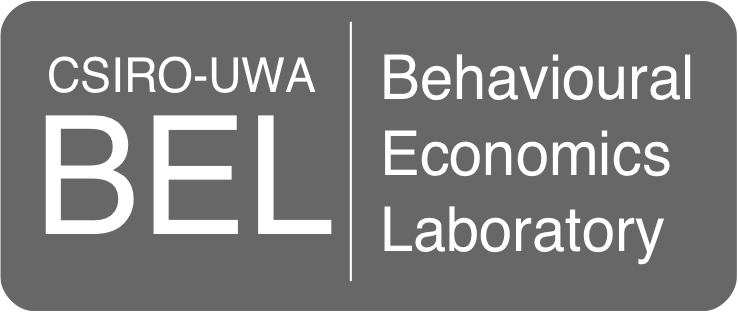 Behavioural Economics Laboratory
Behavioural Economics Laboratory
The University Of Western Australia
The BEL is a multidisciplinary and state of the art research facility for studying individual and group decision-making in a controlled experimental setting. It is a laboratory consisting of 19 PCs, separated by privacy blinds, which are interconnected in order to allow real-time interactions between lab participants, either individually or as groups. The BEL contains a projector and screen for the delivery of experimental instructions, and space for experiments involving communication between participants, teamwork, or group interviews.

Nearly all of the experiments conducted in the BEL are administered via computer. The BEL can be used to perform networked experiments, which examine the decision making of multiple interacting participants or groups of participants, as well as stand-alone experiments, which examine the decision making of individual participants. At present, we use three different pieces of software for executing and controlling our experiments:
z-Tree: Most of the experiments performed within the lab are executed using z-Tree (Zurich Toolbox for Readymade Economic Experiments), a free software package for carrying out both networked and stand-alone experiments. Initially developed in 1998, z-Tree has gone on to become the benchmark software for conducting economic experiments in behavioural laboratories across the globe. The user-friendly software can be used to quickly construct a variety of economic experiments including public goods, bargaining experiments, double auctions, or clock auctions, for example. The software is sufficiently simple and compact that programing experience is not necessary for the development of most experiments. At the same time the software is flexible and powerful, enabling experienced programmers to incorporate considerable complexity into their experiments.
MATLAB & Psychtoolbox-3: Some of our stand-alone experiments are written in the numerical programing language MATLAB and executed using the Psychtoolbox, which contains functions and routines to create and accurately present controlled visual and auditory stimuli and collect participant responses. The use of MATLAB requires the purchase of a license, whereas the Psychtoolbox can be downloaded and used free of charge.
E-Prime 2: We also conduct some of our stand-alone Experiments using E-Prime, an easy-to-use environment for computerized experiment design, data collection, and analysis. A significant advantage of E-Prime over z-Tree and the Psychtoolbox is that it provides millisecond precision timing to ensure the accuracy of data, and is therefore the preferred software for timing critical experiments. E-Prime's flexibility to create simple to complex experiments is ideal for both novice and advanced users.
Participant recruitment within the lab is administered using ORSEE (Online Recruitment System for Economic Experiments), a web-based Online Recruitment System specifically designed for organizing economic experiments. ORSEE is a software tool that allows researchers to schedule experiment sessions and recruit participants. It tracks experiment participation and provides information about the subject pool and recruitment procedures of a study. The software simplifies the organization of economic laboratory experiments, allows for the standardization of the procedures of experiment organization, and provides information and statistics about the subject pool and recruitment procedures. The software is published under an open source license and can be downloaded and used free of charge.
We also use MATLAB for data pre-processing, and computational and mathematical modelling, whereas data analysis is largely conducted using R. R is a language and environment for statistical computing and graphics. It provides a wide variety of statistical (linear and nonlinear modelling, classical statistical tests, time-series analysis, classification, clustering) and graphical techniques, and is highly extensible. One of R’s strengths is the ease with which well-designed publication-quality plots can be produced. It is available on a wide variety of platforms as Free Software.